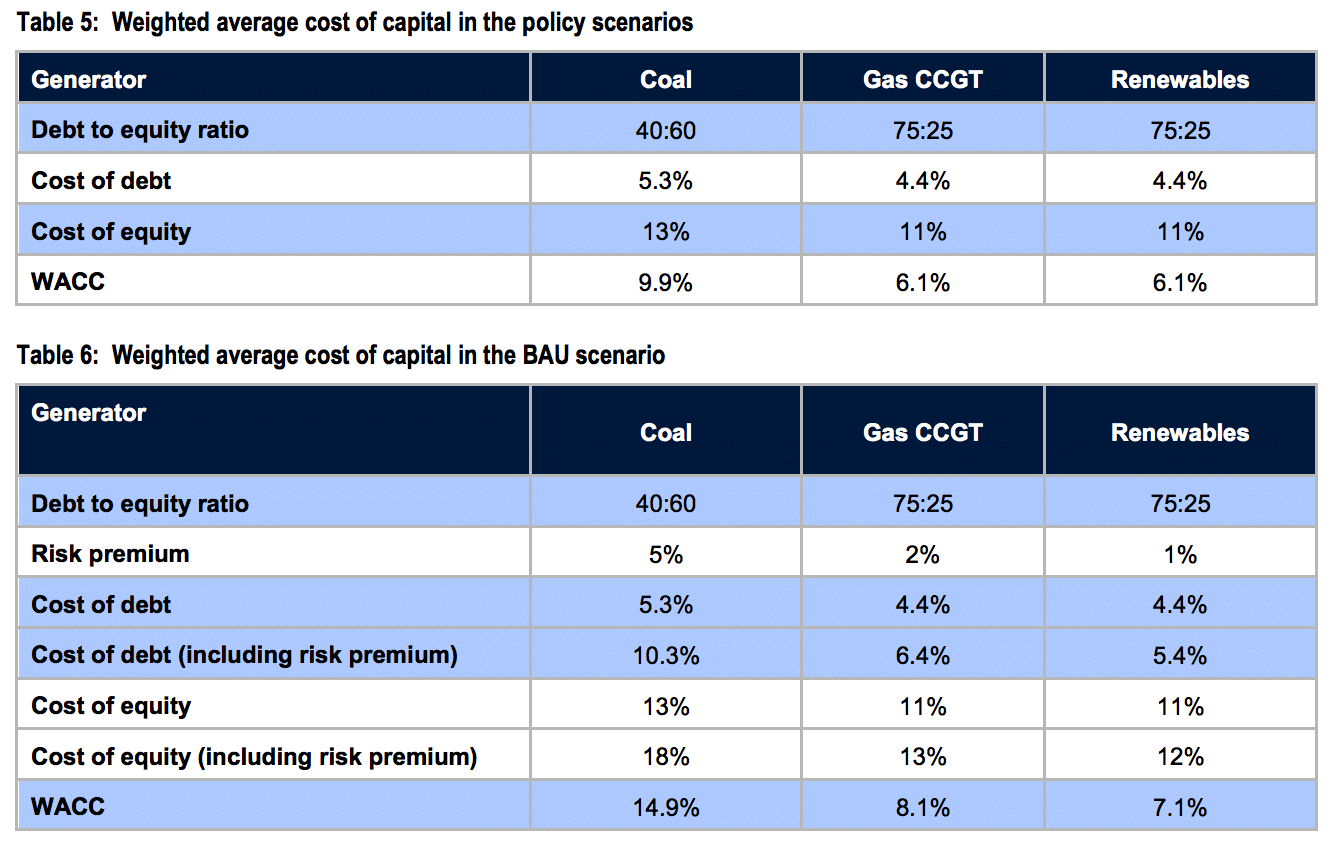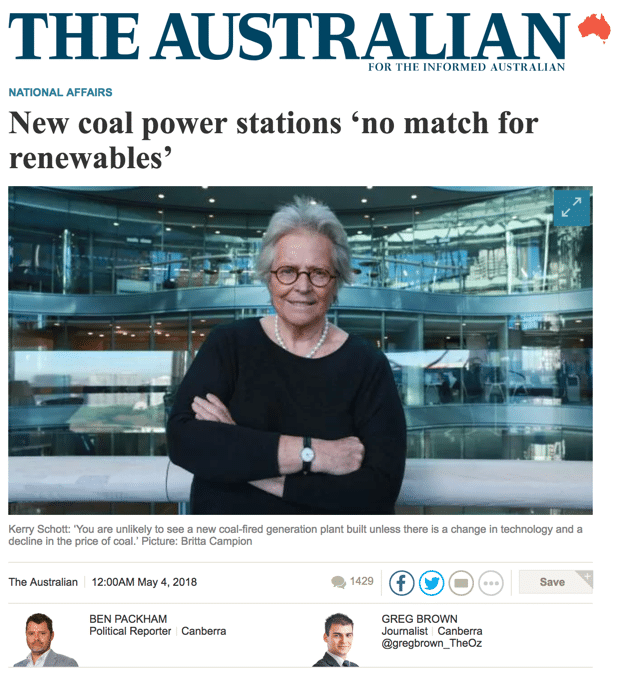Investor News
Claim 'coal is dead'
It was an extraordinary series of headlines last week...
New coal power stations ‘no match for renewables’ (link).
That was the claim by Dr Kerry Schott, the Chair of the Energy Security Board.
You are unlikely to see a new coal-fired generation plant built unless there is a change in technology and a decline in the price of coal.
The cost of running a clean-coal plant is much more expensive than running a combination of wind, solar and gas, or, better yet, wind, solar and pumped hydro.
This claim has created tension, with Resources Minister Matt Canavan firing back...
Canavan’s ‘please explain’ to Schott over coal-powered stations (link).
“Ms Schott’s comments do not reflect the advice that has been provided to the government, including through the Finkel review,” he said.
“The Finkel review concluded that today solar with storage was 70 per cent more expensive than a new coal-fired power station.
“I have asked Ms Schott to explain what evidence she is relying on to make these conclusions.
“It is extremely important we make the right choices to produce the cheapest power in Australia. Around 50,000 Australians work in metals manufacturing and their jobs rely on us getting this right.”
Love him or loathe him, Andrew Bolt has delivered a blunt rebuke to Schott's claim here.
First of all, what makes coal-fired power stations a bad investment in Australia is not the cost of coal but government regulations - existing and threatened - which are designed to drive coal-fired generators out of business.
Those generators face taxes and targets, plus competition from subsidised and mandated competitors like wind and solar which have no responsibility for providing 24/7 power.
Overseas, however, countries with less punitive policies are building more than 600 coal-fired plants. Clearly such plants are more competitive when governments allow them to be.
One thing for sure, the financial modelling of new coal-fired power projects includes a risk premium stemming primarily from regulatory uncertainty.
Energy policy subsidises renewables and mandates the purchase of 33,000 GWh of electricity per year from renewable sources by 2020, including from wind, solar, hydro and biomass.
This results in a higher 'risk' rate for coal-fired projects.
Here's an excerpt from the Report to the Independent Review into the Future Security of the National Electricity Market:
The weighted average cost of capital for coal under all scenarios is higher because of project risk. For example, a new coal power station would be expected to be of large capacity and take a long time to build. Even in a stable policy environment there is project risk related the size of the capacity addition relative to demand growth, technical risks incurred and the relative impact of future market outcomes on net project returns.
A different weighted average cost of capital is used in the BAU and in the policy scenarios in order to reflect the policy uncertainty in the BAU case. Feedback from ARENA and CEFC was supportive of this approach. The assumptions used for the weighted average cost of capital for the policy scenarios and the BAU cases are given in Table 5 and Table 6. All the WACC figures shown are pre-tax and adjusted for inflation. The basis of the gearing ratio is related to the perceived market and regulatory risk involved, which varies by technology, using information provided to the Finkel Review.

Achieving a balance between affordability, reliability and emissions intensity is very difficult.
It will be interesting to see if Dr Shott can produce the detail for the Resources Minister.
Meanwhile, our local focus on developing Coldry as a solid fuel alternative for high-priced gas remains unaffected by this particular issue.
Renewables aren't suitable for providing industrial-scale process heat.
We're progressing with testing and sales development activity at present, so stay tuned for future updates.
